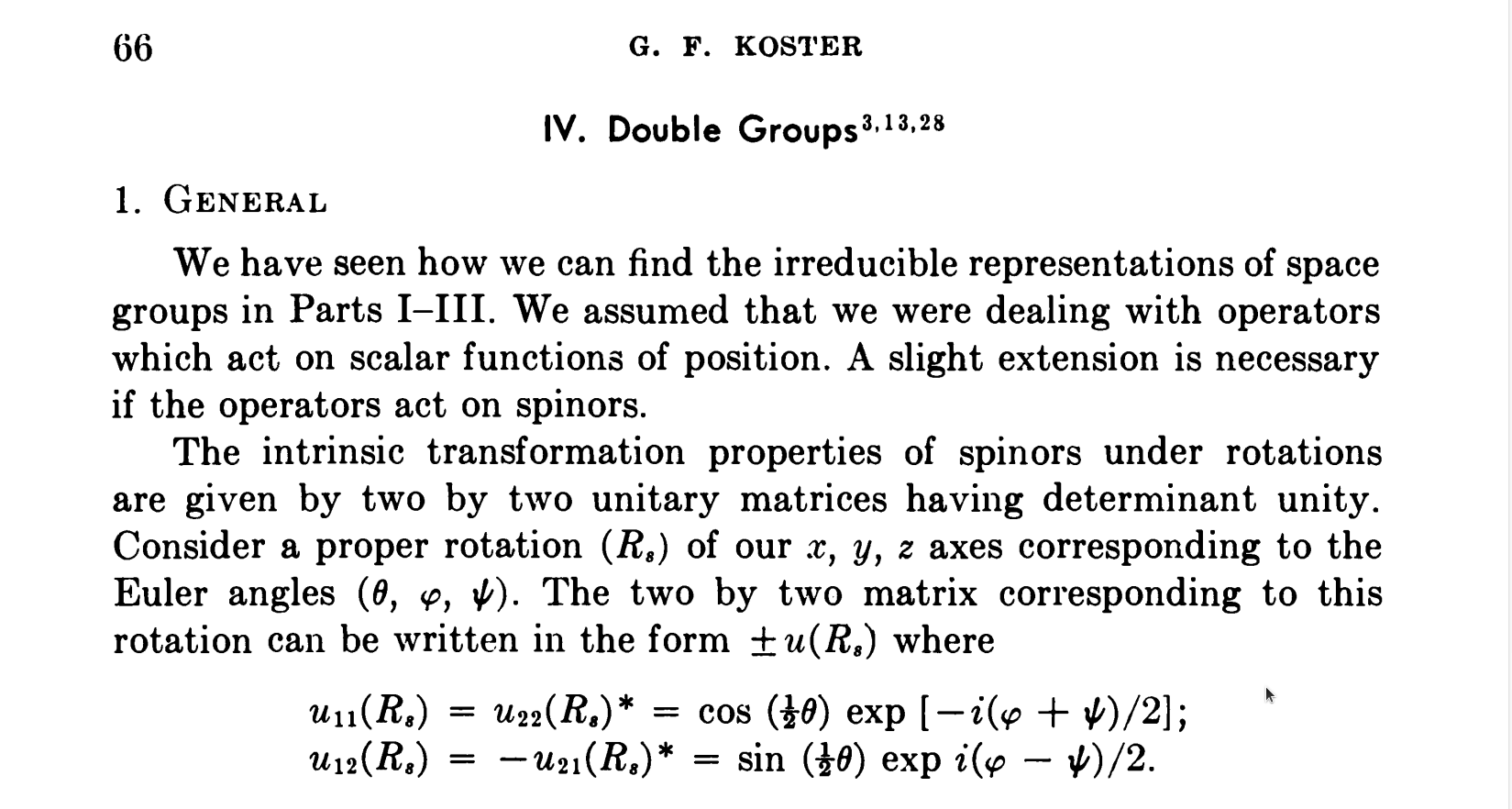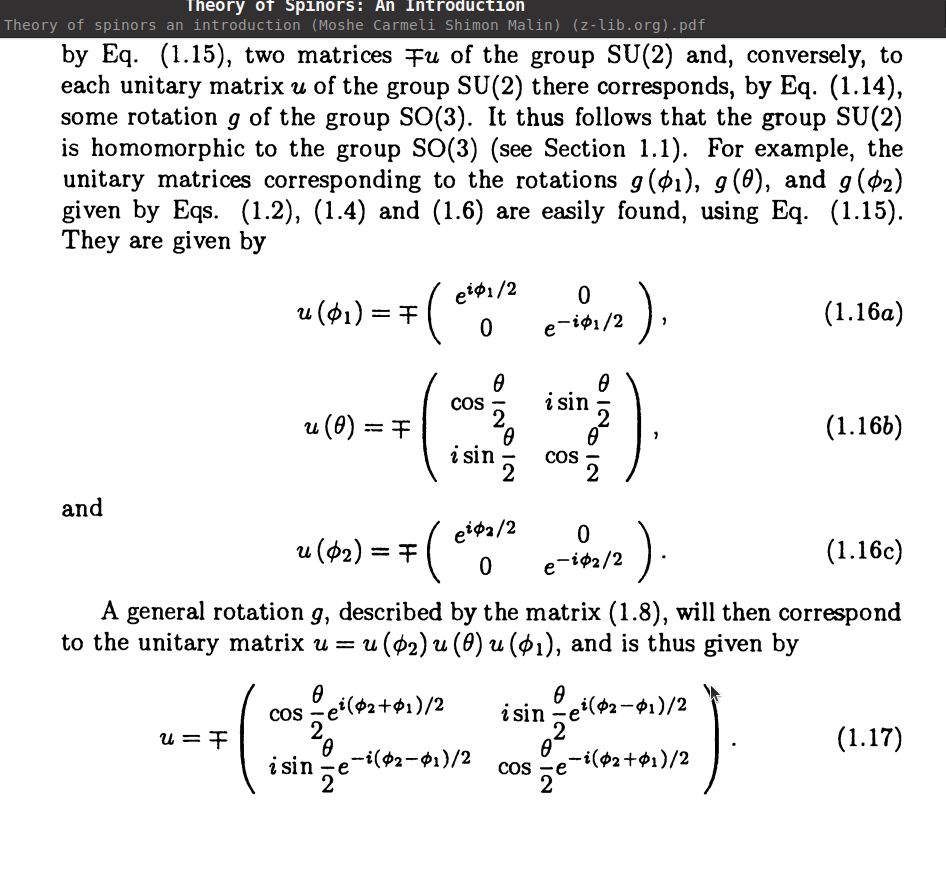In this book "Space Groups and their Representations", I noticed the following method to represent a 3 dimensional rotation with a 2 dimensional complex matrix:

I try to reproduce this method to obtain the same 2 dimensional complex matrix, i.e., the following:
In[12]:= u={{Cos[1/2 \[Theta]] Exp[-I (\[CurlyPhi]+\[Psi])/2], Sin[1/2 \[Theta]] Exp[I (\[CurlyPhi]-\[Psi])/2]},
{-Sin[1/2 \[Theta]] Exp[I (\[CurlyPhi]-\[Psi])/2], Cos[1/2 \[Theta]] Exp[-I (\[CurlyPhi]+\[Psi])/2]}}
Out[12]= {{E^(-(1/2) I (\[CurlyPhi] + \[Psi])) Cos[\[Theta]/2],
E^(1/2 I (\[CurlyPhi] - \[Psi]))
Sin[\[Theta]/2]}, {-E^(1/2 I (\[CurlyPhi] - \[Psi])) Sin[\[Theta]/
2], E^(-(1/2) I (\[CurlyPhi] + \[Psi])) Cos[\[Theta]/2]}}
On the other hand, I noticed the following description given in the book "Theory of spinors : an introduction", as shown below: 
So I tried the following method to establish the relationship between them, but failed to verify the equivalence between these two different forms:
In[133]:= u={{Cos[1/2 \[Theta]] Exp[-I (\[CurlyPhi]+\[Psi])/2], Sin[1/2 \[Theta]] Exp[I (\[CurlyPhi]-\[Psi])/2]},
{-Sin[1/2 \[Theta]] Exp[I (\[CurlyPhi]-\[Psi])/2], Cos[1/2 \[Theta]] Exp[-I (\[CurlyPhi]+\[Psi])/2]}}//FullSimplify
Out[133]= {{E^(-(1/2) I (\[CurlyPhi] + \[Psi])) Cos[\[Theta]/2],
E^(1/2 I (\[CurlyPhi] - \[Psi]))
Sin[\[Theta]/2]}, {-E^(1/2 I (\[CurlyPhi] - \[Psi])) Sin[\[Theta]/
2], E^(-(1/2) I (\[CurlyPhi] + \[Psi])) Cos[\[Theta]/2]}}
In[134]:= u1={{Exp[I \[CurlyPhi]/2],0},{0, Exp[-I \[CurlyPhi]/2]}};
u2={{Cos[\[Theta]/2], I Sin[\[Theta]/2]},{I Sin[\[Theta]/2], Cos[\[Theta]/2]}};
u3={{Exp[I \[Psi]/2],0},{0, Exp[-I \[Psi]/2]}};
u3 . u2 . u1//FullSimplify
Out[137]= {{E^(1/2 I (\[CurlyPhi] + \[Psi])) Cos[\[Theta]/2],
I E^(-(1/2) I (\[CurlyPhi] - \[Psi])) Sin[\[Theta]/2]}, {I E^(
1/2 I (\[CurlyPhi] - \[Psi])) Sin[\[Theta]/2],
E^(-(1/2) I (\[CurlyPhi] + \[Psi])) Cos[\[Theta]/2]}}
Any hints/comments/tips for this problem will be appreciated.
Regards, Zhao